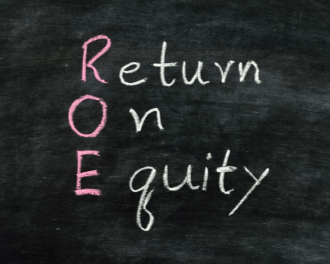
On the Virtues of Return on Equity
Regular readers will know that we are keen observers of business quality, and feel that one of the more helpful markers of business quality is the ability of a business to sustain a high return on equity (ROE).
With this in mind, we thought it might be helpful to look at some of the evidence. If high ROE is a valid marker for investment merit, then we should be able to see that expressed in the returns produced over time by high-ROE businesses. We put together a simple analysis to test whether the facts are with us.
Using companies from the ASX300 Index, we assembled a data set, comparing ROE with subsequent investment performance. For our ROE metric we took a simple average of reported ROE for the previous three years, and trimmed the data to remove any extreme high or low values.
For investment returns, we looked at relative outperformance, which we adjusted to remove the effects of beta (for example a low beta company that does well in a falling market isn’t necessarily performing well – it might just be doing better because of the low beta).
When we looked at this data set over the most recent 12 years of ASX300 history, here is what we found:
- A portfolio made up of companies in the top 10 per cent by historical ROE would have outperformed the market by a risk-adjusted 5.1 per cent p.a. That number is before expenses, but this is quite a low turnover strategy, so it’s a strong result.
- We tracked the strategy in 3 month intervals, and found that it outperformed in about 60 per cent of those intervals, which is also a solid result. Most investment styles experience periods when they are out of favour, and 60 per cent is quite a respectable success rate. Unsurprisingly, the first quarter of 2016 was one period in which the strategy did not perform well. Our observation has been that in this last quarter a lot of low-quality businesses have done very well, and the numbers gel with that observation.
- Where the strategy really shone was in avoiding the disasters. Companies in the bottom 10 per cent by ROE did especially poorly. Being able to short sell some of these weaker names would have been very profitable.
All in all, the data seems to point to ROE being a good starting point in looking for quality businesses. It’s by no means the whole story – a complete company analysis should also take account of the likelihood that ROE will be higher or lower in future periods, any use of gearing to enhance reported ROE, and the opportunity for the company to reinvest in future while sustaining a high ROE. Nonetheless, starting with a strong ROE seems to tilt the odds in your favour.
The numbers also highlight that a strategy that invests in loss-making or low-profit businesses in the hope that their fortunes will improve in future has its work cut out for it.
Call us lazy, but we prefer a strategy where the odds are in our favour, and we don’t need to produce heroic investment insights to get good results.
Tim Kelley is Montgomery’s Head of Research and the Portfolio Manager of The Montgomery Fund. To invest with Montgomery domestically and globally, find out more.
Shane
:
A thought, is the easiest way for a company to have higher returns on equity in future periods to write down their book value (and suffer a one off poor ROE), then future ROE’s will look good? Obviously not a great company that does this though I would imagine.
Tim Kelley
:
Yes. Also IPOs and restructurings provide a good opportunity to artificially lower SHF and therefore inflate ROE. A strong ROE is a positive sign, but certainly not a guarantee.
Peter Garriga
:
Thank you Tim – what do you deem to be a high ROE ? Can you put a number on that ? Similarly what ROE is considered unworthy of further analysis?
cheers
Pete
Tim Kelley
:
Anything above 20% I think is good, assuming it’s sustainable as the business grows. The market average would be around 12-15%, and I would be reluctant to spend much time analysing a business delivering much less than that.